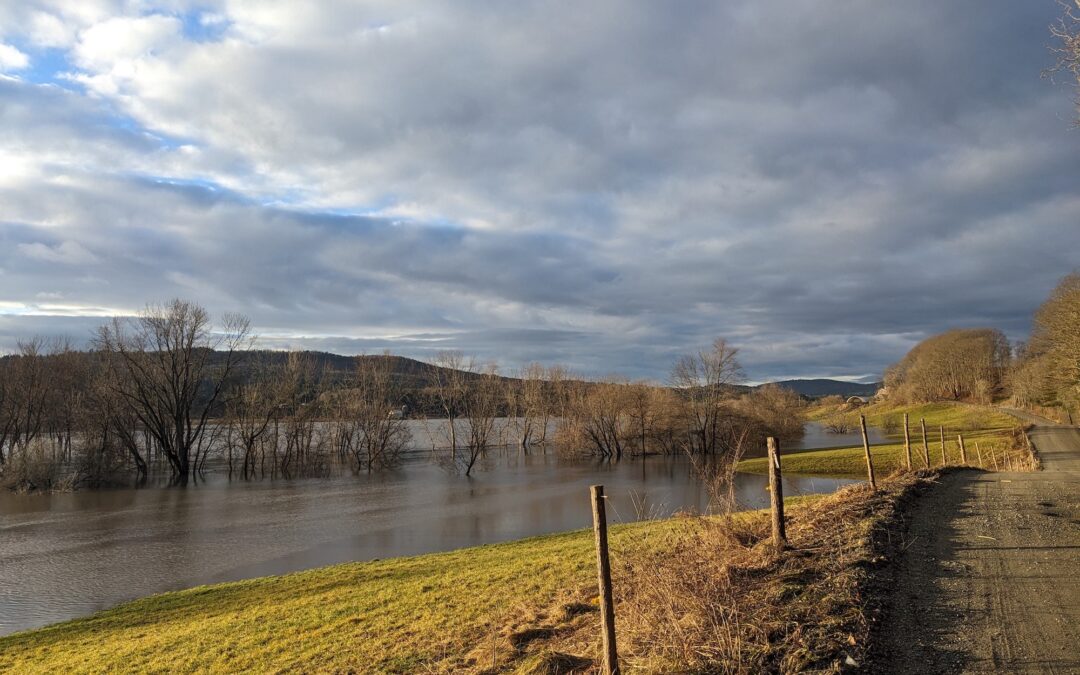Montpelier, VT – Today, the Vermont Senate voted in strong, bi-partisan support of S.213, the Flood Safety Act (24-4-2). This bill takes important steps to reduce flood risk across Vermont, at a critical time when flood-related disasters are becoming more frequent and more severe. The Senate will vote again tomorrow before the bill advances to the House for their consideration.
Following the devastating floods of 2023, and in recognition that Vermont averages nearly 2 major flooding disasters annually, Vermont lawmakers are advancing policies to improve our collective flood resilience. These policies will improve public safety, reduce damages and the mounting costs associated with flood recovery, better support our municipalities and our residents, improve water quality, support biodiversity, and protect recreational opportunities.
With this strong, bi-partisan Senate vote, we look for continued leadership from legislators in the House, as the Flood Safety Act makes its way into their hands.
“We are so grateful to the Vermont State Senate for their recognition of the severity of our flooding problem in passing the Flood Safety Act,” said Lauren Oates, Director of External Affairs with The Nature Conservancy in Vermont. “Vermonters cannot afford another spring flood, summer microburst, or fall tropical event without policy action that reduces our collective vulnerability to these increasing flood risks.”
“After living through catastrophic flooding in my community last summer, as so many other Vermonters did, I’m grateful the Senate has advanced a critical policy to reduce future flood risks in our communities,” said Lauren Hierl, Executive Director of Vermont Conservation Voters. “This bill will better regulate development in river corridors and wetlands, and address dam safety, which will make our watersheds more resilient to flooding and other climate disasters.”
Karina Dailey, Restoration Ecologist for Vermont Natural Resources Council added, “Clearly preventing flooding is better than responding to the disastrous consequences in the aftermath, by restoring and protecting our rivers, floodplains, and wetlands we are giving them the space to function and prevent the risk for the future…this is resilience.”
The Flood Safety Act, S.213, takes a whole-watershed approach to mitigating flood-related impacts across the state by:
- Addressing development in high-hazard river corridors by implementing statewide regulations to keep future development out of harm’s way and allow space for our rivers to store and slow floodwaters, which help reduce flood impacts and costs for Vermonters.
- Increasing floodwater storage in wetlands through improved mapping and reporting and establishing a 2:1 wetland net-gain policy to reverse historic wetland loss through protection and restoration.
- Improving dam safety by consolidating oversight and strengthening maintenance requirements for dam owners, while investing in the strategic removal of dams that exacerbate flooding and pose a risk to public safety.
In a recent poll, 67% of Vermonters supported limiting development in areas especially prone to flood damage, an issue that garnered majority support by Democrats, Republicans, and Independents. These results demonstrate that Vermonters are ready for the policy action proposed in S.213. See more polling details here: https://vnrc.org/wp-content/uploads/2024/02/TNC-Flood-River-Policy-Polling-2024.pdf
“We can not understate the importance of providing a pathway for removal of unused dams and the need for consistent comprehensive inspection of the dams in our state to protect the public. The Vermont Department of Environmental Conservation also has to be properly staffed to carry out this important work,” added Kathy Urffer from the Connecticut River Conservancy.
Another aspect of the bill involves proactively preventing one of the leading causes of toxic polystyrene foam from entering Vermont’s waterways, dock foam. This foam pollution is worsened by climate change, such as during flood events, and it can kill wildlife, pollute beaches, and degrade water quality.
Julie Silverman, Lake Champlain Lakekeeper, with Conservation Law Foundation in Vermont shares, “As someone who’s regularly out on the water, I’ve seen firsthand the powerful impact of severe storms creating more harmful marine debris and pollution in our waterways. The urgency is real—S.213 takes critical steps towards keeping these toxic materials out of Vermont waters.”
Lori Fisher, Executive Director of the Lake Champlain Committee stated, “We commend the Vermont Senate for taking action to build climate resilience with passage of the Flood Safety Act. We hope the House will advance the measure for the safety of our communities and the protection of water quality and ecosystem health.”
###
Contact:
Lauren Oates, The Nature Conservancy in Vermont, lauren.oates@tnc.org
Lauren Hierl, Vermont Conservation Voters, lhierl@vermontconservationvoters.org
Julie Silverman, Conservation Law Foundation Vermont, jsilverman@clf.org
Lori Fisher, Lake Champlain Committee, lorif@lakechamplaincommittee.org
Karina Dailey, Vermont Natural Resources Council, kdailey@vnrc.org Kathy Urffer, Connecticut River Conservancy, kurffer@ctriver.org

